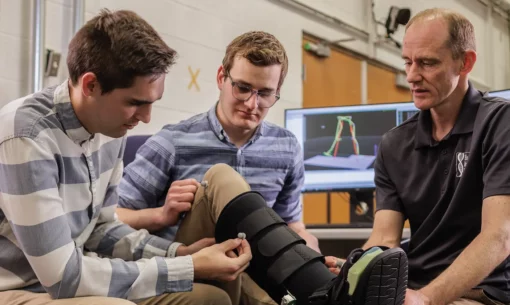Geology 105: Diamonds and Gems —taught by adjunct professor Keryn Tobler Ross (BS ’99, MS ’15)—isn’t your standard GE science class. Students learn the “four Cs” of gemology (cut, clarity, color, and carat weight) and identify real gems. They hunt for gems themselves on a field trip to Topaz Mountain in Utah’s West Desert. And they delve into the geology department’s trove of rare gemstones, many donated by alumni and others, learning from mineral marvels like the ones below.

- 1,210: The weight in carats of the “Tuition Topaz” (as nicknamed by Ross’s students), valued around $50,000. “Topaz is rarely naturally blue,” Ross says. The color comes from irradiating the crystals, often deep in a nuclear power plant.
- Imperial Topaz: “In Imperial Russia, only the czar and his family were allowed to wear [this gemstone],” Ross says. They’re prized for their rare coloration.
- Ring Ready: Ross praises this diamond for its “precise cut that maximizes brilliance, fire, and sparkle.” Colorless diamonds aren’t typical—most are brown or yellow.
- Eight Faces: Weaker bonds form between atoms in the crystal lattice of fluorite, says Ross. “By taking a small hammer and wedge, you can break the gem along these cleavage planes to create this fun octahedral shape.”
- 7 x 3 x 1.5 cm: The dimensions of this carved iridescent opal, “unusual and valuable” for its size and quality.












